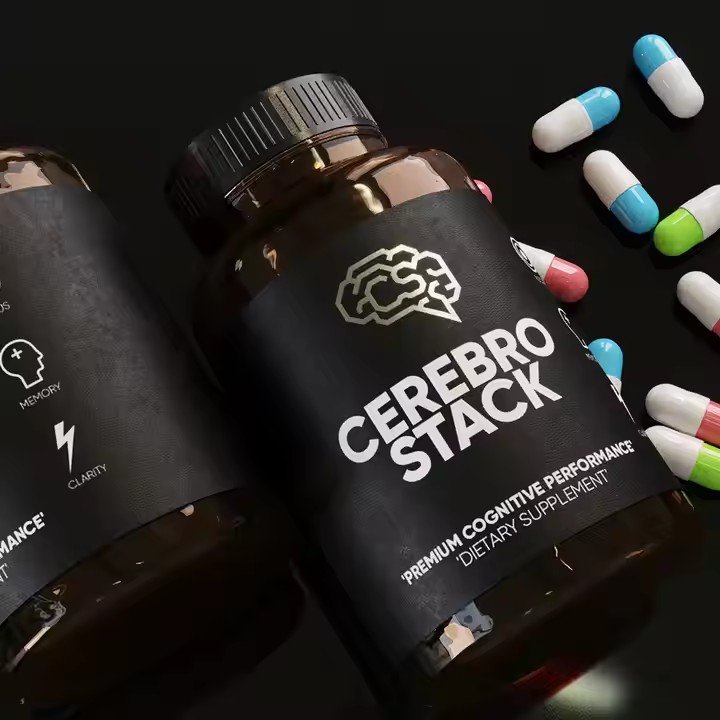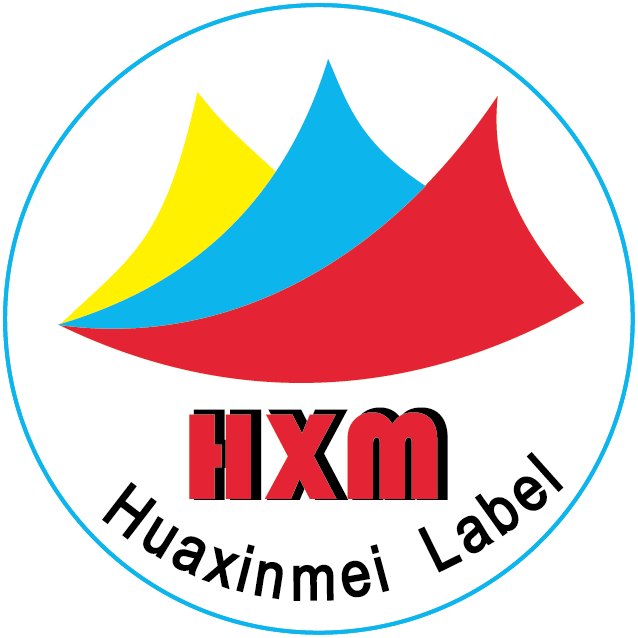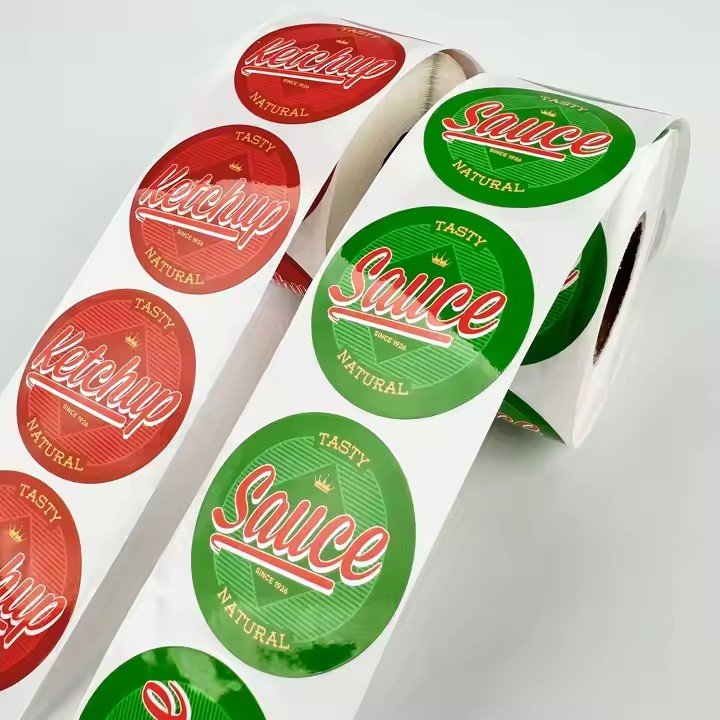- Types and Characteristics of Basic Food-Safe Materials
Paper-based materials are a traditional choice for food stickers, with safety determined by the purity of the raw pulp and processing methods. Unbleached virgin wood pulp paper is ideal, as it avoids the risks of ink residue and heavy metal contamination found in recycled paper. For instance, Stora Enso in Finland produces food-grade kraft paper made from 100% virgin fibers, FDA-certified for direct contact with dry foods. Its surface smoothness (300S) supports high-precision printing. To enhance water resistance, food-grade paper stickers are often coated with beeswax, a natural and edible barrier widely used in baked goods labeling.
Plastic-based materials rely on molecular stability for safety. Biaxially oriented polypropylene (BOPP) is widely used due to its excellent chemical inertness. BOPP films that meet GB 4806.7-2016 standards must have monomer residues below 0.5 mg/kg and be free from phthalate plasticizers. For low-temperature environments, low-density polyethylene (LDPE) is preferred—it maintains flexibility even at -40°C, making it ideal for frozen food labeling. However, all plastics must pass migration testing, which simulates food contact (e.g., soaking at 40°C for 10 days), with total migration limits not exceeding 60 mg/kg.
Biodegradable materials represent the future of food sticker development. Polylactic acid (PLA), derived from fermented corn starch, decomposes into carbon dioxide and water at temperatures above 60°C. With up to 92% transparency, PLA films are highly printable. Another innovative option is chitosan film, extracted from shrimp and crab shells, which also offers antibacterial properties—ideal for fresh food labels. However, these materials have temperature limitations: PLA deforms above 65°C, making it unsuitable for hot food applications.

- Safety Standards and Regulatory Compliance
The globally recognized FDA 21 CFR 177 standard sets strict regulations for food-contact materials. Section 177.1520 specifies that formaldehyde release from adhesives must not exceed 0.1 mg/kg and prohibits solvents containing benzene derivatives. The EU 10/2011 regulation goes further, requiring both overall migration testing (OMIT) and specific migration limits (SML). For printing inks commonly used on stickers, the combined heavy metal content (lead, cadmium, mercury, hexavalent chromium) must remain below 100 mg/kg.
In China, the GB 4806 series provides a comprehensive regulatory framework. For example:
GB 4806.8-2016 governs paper and paperboard in food contact, limiting fluorescent whitening agents to 20 mg/kg.
GB 4806.10-2016 applies to plastic coatings, limiting volatile organic compounds (VOCs) in sticker inks to 100 g/L.
All materials must be labeled “for food contact” with a clear indication of their temperature tolerance, giving consumers the basis for informed choice.
Specialized standards for specific contexts are equally critical:
Stickers for infant food must comply with GB 31604.1-2015, excluding materials with BPA and any detectable plasticizers.
Stickers for high-temperature sterilized foods must pass a boiling test at 121°C for 30 minutes to ensure no decomposition or ink shedding during sterilization.
These tailored requirements safeguard labeling safety across diverse food categories.
- Material Matching Principles for Application Scenarios
In cold storage environments, materials must resist freezing. Stickers for ice cream packaging should use cold-resistant polyethylene (PE), which maintains flexibility at -20°C to prevent brittleness and peeling. Adhesives should be water-based, free from volatile solvents like ethanol, to avoid shrinkage at low temperatures. For example, Meiji Dairy in Japan uses a three-layer composite label: an outer PE protective film, a middle print layer, and an inner cold-specialized adhesive, maintaining adhesion for over six months at -18°C.
In high-temperature processing, materials must withstand heat. For labels applied to baked goods, polyimide (PI) is suitable, tolerating temperatures up to 260°C without deformation. Ceramic-based pigments should be used for printing, ensuring no harmful emissions during baking. Food stickers used with Bosch baking machines in Germany utilize heat-curing technology to maintain color stability at 180°C with no adhesive residue after removal.
For fresh produce, breathability is essential. Stickers for meat or fruits/vegetables should use breathable paper with an air permeability of 300–500 ml/min (under 1 kPa pressure) to prevent condensation. They must also resist moisture deformation for at least 24 hours at 90% humidity. For instance, Zespri kiwifruit stickers use breathable paper made from softwood pulp and food-grade water-based adhesives to ensure both adhesion and fruit respiration.

- Balancing Technical Standards and Human-Centered Design
Choosing materials for food stickers requires a balance between technical specifications and consumer safety ethics. Designers must combine materials science expertise with a “food-safety-first” philosophy. Whether it’s the natural purity of virgin pulp or the innovation of biodegradable materials, every material decision reflects a commitment to consumer health.
Looking forward, as nanocoatings, antibacterial materials, and other new technologies emerge, food stickers will evolve to integrate higher levels of safety and functionality, ultimately becoming a visible assurance of food integrity.


